- Joined
- Jan 28, 2011
- Messages
- 97,461















https://www.rockpapershotgun.com/2016/09/26/master-of-orion-3-retrospective/
Friendless Space: Why Master Of Orion 3 Is Important
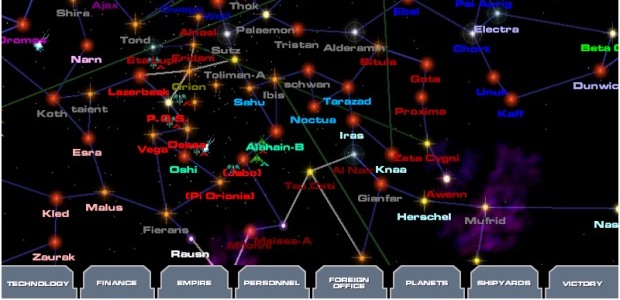
Games are either good or the worst thing to ever happen. That’s just how it works. Oh, sure, there are divisive games, but once the consensus has been reached that a game is bad, that’s it. Cast it away into the pit of 1 star reviews, the lair of the Thumbdown, to be spoken of only with frothing hatred and contempt. Never to be touched. Never to be examined.
Master of Orion 3 is one of the most important 4X games ever made. There, I said it. It’s all over for me now. Follow not where I dare to tread.
Infogrames released Master of Orion 3 in early 2003, following a long and troubled development period by Quicksilver Software. It was a mess. It’s still a mess. The highly anticipated sequel to the two most beloved space 4X games ever is a maddening exercise in battling your own empire’s broken AI for hours, only to discover that you’ve already overcome your only real opposition.
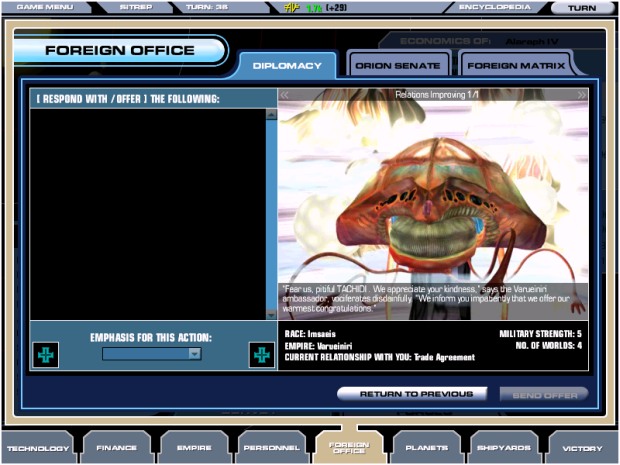
The interface is an overwrought clickfest – and locked at a resolution of 800×600, which was already quite backwards by 2003 and a genuine obstacle when standard maps feature hundreds of star systems. Rival empires send regular streams of erratic and self-contradictory messages, until you learn they can be completely ignored as they seldom actually do anything. Vital components of (rather ugly) combat failed to work at all. Your shipyards are utterly consumed with the desire to fill the universe with useless transport ships. Except for the lovely designs of the aliens, it’s appearance is featureless. There’s a fair bit of truth to the common refrain that you can just click ‘end turn’ a few hundred times and win without doing anything.
If you’re having trouble imagining it, it’s a bit like if Firaxis had decided to give soldiers in XCOM the ability to act without orders, but instead of shooting aliens all they did was fiddle with themselves and cry. Leave them to it for long enough and the aliens all drown.
Lots of drama behind the scenes followed by a shrug from Infogrames meant it was released far too early, given a few cursory patches, and left to die at the hands of furious fans. A few of these fans, however, got over their shock and released a mildly confusing collection of unofficial patches in an effort to redeem it.
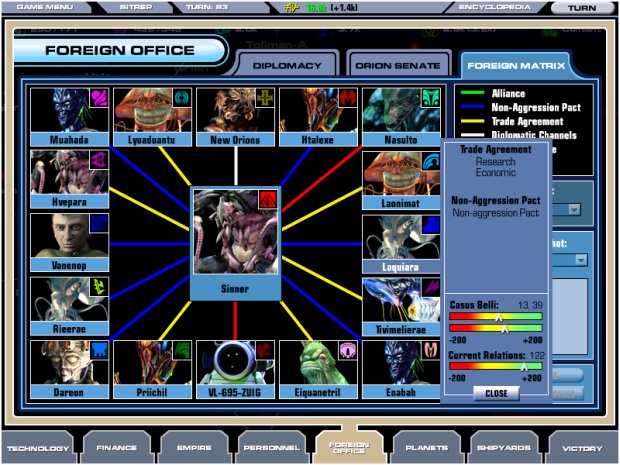
To some extent, they succeeded. Even the basic “vanilla” patch (limited to bugfixes only) changes the experience substantially. But this is not the part where I say that they turned it into an unsung classic. For all their hard work, Master of Orion 3 remains flawed, and will only ever be truly enjoyed by a fringe within a fringe.
The first mistake was in calling it Master of Orion at all. There are few games more bitterly denounced than average sequels to legendary originals, but aside from being not great, and aside from being broken, MoO3 was designed with a completely different ethos to the originals. I barely even need to describe how the first two games worked, as they stand alongside Civilization as pillars of standard 4X design 20+ years on. You start with your choice of species on a single world, build stuff on it, send out ships to find another one, build on that world, rinse and repeat until it’s 4am and each turn is taking 15 minutes because you’ve got so many of bloody planets to organise.
They were great, and they still play well, but Quicksilver did something important: they tried to move the genre on. The lukewarm reception of the recent, tiresomely homonymous reboot has only highlighted how little that has happened despite the recent revival of the 4X. God, I’m bored of that same old formula. It’s been decades, and still we get the same old formula again and again, delivered in the same way, with the same strategies and the same factions and any exceptions a mere oasis.
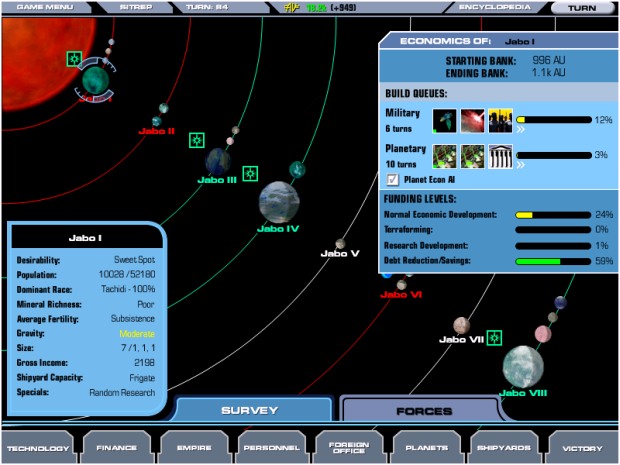
MoO3 does all four exes, but it was always intended to be an exercise in macromanagement instead, with you setting out broad plans and relaying them from the top, trusting the automation to take care of the details. Instead of painstakingly repeating your standard build order item by item, choosing every research item, and personally tying every soldier’s shoes, you’re meant to delegate all that. You don’t run every planet in the empire, you run the empire. And after all that patching, it sort of works. You can still obsessively micromanage every detail if you must, but maximum, perfect efficiency just isn’t necessary, and could never be worth the sheer time it’d take anyway. So some of your 200 planets have an unwanted building, or you have a few dozen redundant ships in between your 1,500-strong fleet. Who cares? If you could prevent that from happening in such a complex simulation, your skills would probably be better directed towards conquering Europe.
Its constituent parts, like research, are different too, as instead of picking single links in a chain, your people constantly research in six concurrent fields. You set the proportion of work going into each field. When you reach the next level in a field, your scientists start researching every technology at that level at once. Many prerequisites are cross-discipline, most technologies are completely invisible until you’ve reached certain levels in other fields, and finally some technologies are beyond you, and must be stolen or traded for. I became fond of Fusion Cannons in one campaign, but in the next had to go without anything at that level until I could research an alternative.
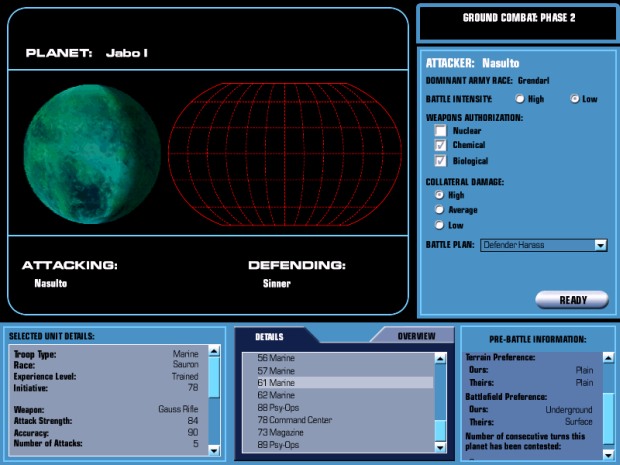
Then there’s the economy, which splits taxation into three systems, at the planet level, the star system level, and the empire level, each interacting but (for once) handled well enough that the AI can be trusted with most of it if you prefer. I’d be surprised if Code Force didn’t secretly study it while developing their “state vs private sector” economic system in Distant Worlds.
Master of Orion 3 had a highly detailed and elaborate backstory, which manifests in game in some interesting concepts. The villainous Antarans, following their defeat in the second game, returned to wipe out several races and enslave everyone else. After centuries of abuse and genetic experimentation on everyone, they accidentally bioweapon themselves almost to extinction, and wind up stuck on a single highly advanced planet, while you and everyone else suddenly has freedom to grow. About half the races (up to 30 at once) are in the Senate, set up by the Antarans (now the New Orions) to police everyone. You can start in the Senate by spending ‘race pick’ points, if you deduct them from somewhere else like mining or farming – each race can be modified somewhat. Otherwise it’s pot luck. If you’re in the Senate, your goal is to be voted in as leader. If you’re not, your goal is to race towards the galaxy’s core and kill off anyone who might be voted in.
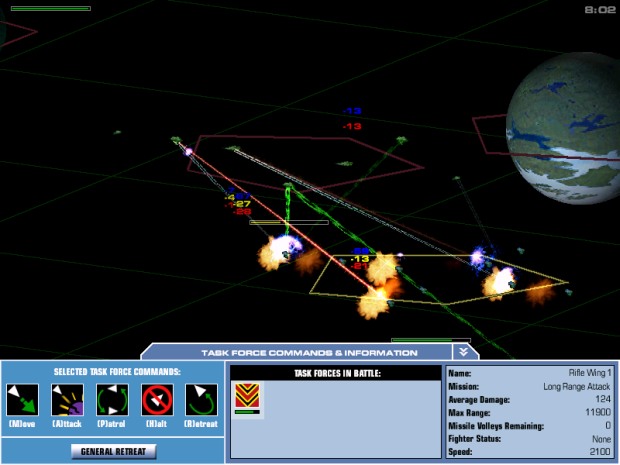
In addition to all this, the complex history of brutality between the races has left them with default relations that will likely win out whatever you do. Lizard races will almost invariably hate the aquatic races, robots hate ethereals, insectoids hate silicoids, and everyone hates the Harvesters – sentient bioweapons who can never join the Senate and will infect and assimilate anyone they share a planet with. The result is that many games will escalate into some variation of the Great Fish/Lizard War as everyone gradually aligns. It’s this that partly explains the still erratic diplomatic attitudes, which are otherwise dissatisfying. Relationship bars give no explanation of their influences, and often make little sense. Close allies often suddenly declare war without warning, and as the insectoid Tachidi I merrily bombed and invaded several lizard planets, making no dent in their positive opinion of me.
Diplomacy only makes any sense when you play along with the base relations. The trick is to think about the enemies of your enemies, and exploit the obligations of alliances in order to create a Triple Entente situation, forcing allies into war with their other allies before they later do it to you instead. But it doesn’t quite work, nor does the Senate. Members can propose legislation but most of it is useless crap, and races can be invited or expelled, apparently at random. In theory, a non-Senate race could suck up to members and angle for an invitation, but that’s unreliable at best, and the prospect of the game suddenly ending at any moment because some race you never even met won the vote is frustrating to say the least.
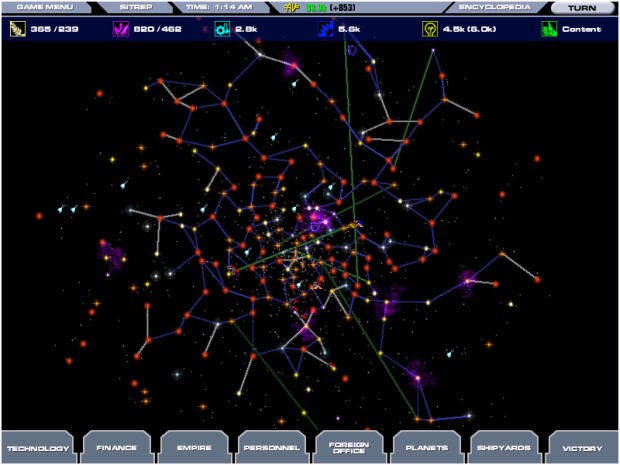
But it was trying. It was trying to create a new kind of 4X game, a simulation of directing an empire in a realistic setting, amid gigantic wars, ancient grudges, and a hint of an emergent story more compelling than “hit whoever’s most powerful and then attrition for 50 turns”.
Like most interesting ideas, it doesn’t quite work, but the result is almost an inversion of the usual experience. Where every other 4X game starts out fast and fun and full of possibilities but soon grinds to a dull halt, here the meat lies in the mid and late game. As your long-term direction of research bears multiple simultaneous fruit, designing ships and directing fleets along strategically important star lanes becomes more interesting than the usual case of just whomping whoever’s in range. If anything, it’s wargamers, not 4X fans, who might get the most out of a campaign once it’s in full swing. Indeed, there’s an option on start-up to have the game run without you for as many turns as you like. It sort of works but mostly hints at something even better, like a procedurally-generated 4X you can jump into partway through.
That last point is, essentially, the bottom line with Master of Orion 3. Thanks to dedicated fans it sort of works, and is revealed as a Franz Reichelt of 4X games; an innovative but catastrophic failure that ought to lead to greater things, if only its ideas and mistakes alike are properly considered.
1/10 worst game evaaaar never speak of it again.














